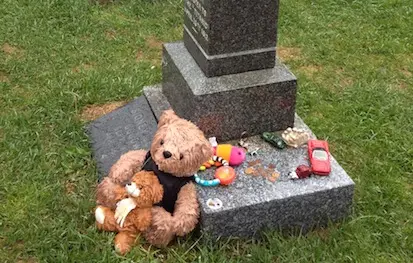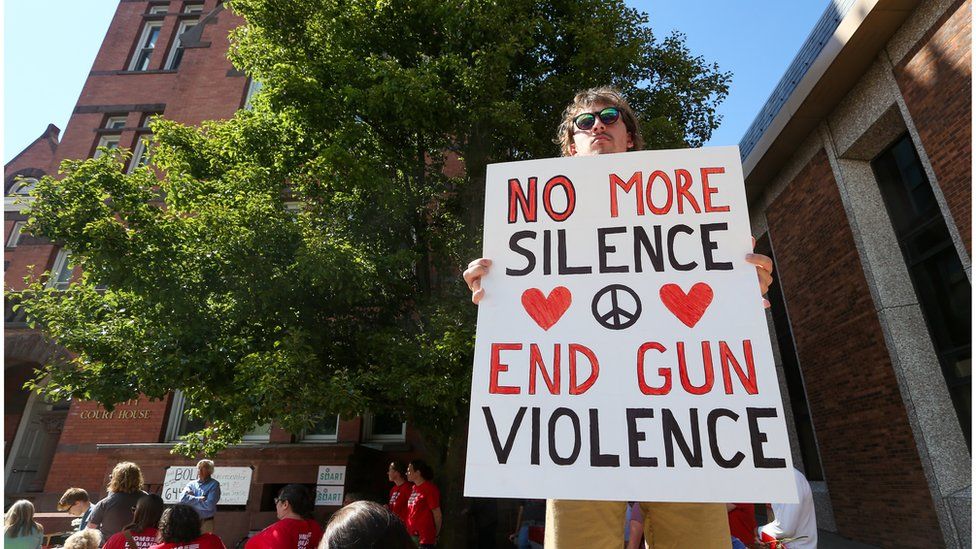From “Catch-22” to Equal Justice: How the Lack of Representation in Court Endangers Domestic Violence Victims

In this report, based on data collected in almost 3,000 intimate partner protective order hearings from 2011-2018, Court Watch examines the impact on the outcomes of final protective order hearings when petitioners represent themselves. In this long-term study, a full 46% of petitioners appeared alone, yet our data indicate that significantly fewer of them have their orders granted than those accompanied by an advocate or attorney and are three time more likely to dismiss their cases than petitioners with court support and less likely to receive orders that address the specific needs of victims and their families.
Moreover, our data show that no cost advocates trained in domestic violence have an impact equal to lawyers in helping victims obtain orders and key provisions. Acknowledging that self-representation gives victims who cannot afford an attorney an opportunity to go it alone as well as the abundant self
help and legal resources available to victims who use this option, we nevertheless conclude that equal
access to justice is not served when victims must represent themselves, a problem not unique to Montgomery County. We recommend that all domestic violence victims who desire it but cannot afford an attorney are ensured free assistance to representation (either an advocate or pro bono lawyer) by the State of Maryland.
Do domestic violence victims in Montgomery County have full access to justice? A look at District Court judges use of five fundamental practices

In this report, which analyses data collected in over 2,500 protective order hearings in Montgomery
County’s District Courts between September of 2016 and April of 2018, Court Watch examines judges’
use of the five fundamental best practices we first recommended in 2011. Notably, shortly after
publication of our 2011 report, in 2012, Maryland’s Chief Judge of the District Courts, the Honorable Ben
Clyburn, sent every District Court Judge a “bench card” urging them to adopt the very same best
practices we identified. Yet, in this current study, domestic violence victims are protected as they leave
the court house far less often than they were in 2012 – in fewer than half of cases. While judges have
improved greatly in engaging victims who wish to dismiss their cases about their safety, other
fundamental best practices have remained at about the same low level they were in 2011. Of particular
concern is that usage of staggered exits continues to vary widely by judge, with one judge staggering
exits 68% of the time, while a second only used staggers 24% of the time. Among our other
recommendations, we urge the District Courts to adopt a more uniform use of this basic safety protocol,
or to adopt a County wide policy to ensure judges stagger exits 100% of the time.
Critical Scaffolding: Strengthening Maryland’s transitional financial support for domestic violence survivors and their children

In 1992, the Maryland General Assembly gave judges the power to require respondents in protective orders to pay emergency family maintenance (EFM) if the victim demonstrates need and the respondent has sufficient income. Rarely awarded in cases where there are no children, the intent behind EFM was to provide maintenance to petitioners who have children in common with abusers so they can meet the basic needs of their families during the pendency of an order and not be reduced to penury and forced to their abuser’s unsafe environment. This two-year study, from September 2015 to April of 2017, seeks to determine why only a quarter of final protective orders involving children were awarded EFM and to identify barriers that may prevent eligible survivors getting the financial help they need and are entitled to ensure their safety.
Court Watch Montgomery Testimony: Neshante & Chloe Davis Domestic Violence Prevention Taskforce

This is a summary of testimony given by Court Watch’s Executive Director, Laurie Duker, before the Neshante & Chloe Davis Domestic Violence Prevention Task Force. Testifying before this governor-appointed task force, with broad powers to review and evaluate existing domestic violence policies and make recommendations for change, was an opportunity for Court Watch to address problems discussed in its data-driven reports and have impact at the state level. Ms. Duker shared concerns about court processes that hamper full implementation of Maryland’s Protective Order Statute in Montgomery County courts, and mirror problems in the rest of the state. She also highlighted the need for state funded child exchange and supervised visitation services as well as continuing education for sitting judges.
Maryland child deaths related to intimate partner violence 2004-2016

This report documents the tragic deaths of 35 children state-wide in intimate partner related violence.
Almost a third were killed during dangerous court-ordered exchanges for visitation or during
unsupervised visits with dangerous or unstable parents. Court watch reiterates that these deaths might
have been preventable were safe visitation services widely available. Increasing the number of domestic
violence victims that have viable safety plans and strong protective orders would also help prevent such
deaths.
Small Actions, Big Impacts: Innovative approaches by Montgomery County District Courts personnel in domestic violence cases

This report provides quotes from our courtroom monitors’ notes documenting the many and varied innovative approaches taken by Montgomery County District Court judges and courthouse personnel in protective order hearings. These approaches have helped to enhance victim safety, ensure both parties understand the parameters of orders and empower victims, underlining how “going the extra mile” enhances effective legal protections for victims and makes our communities safer places to live.
Too many deaths: Domestic violence homicides in Montgomery County Maryland, 2000-2015

In this report Court Watch analyzes data gathered from media reports on domestic violence homicides in Montgomery County from 2000-2015 in an effort to assess the ongoing costs of domestic violence and shed light on the most common types of cases. Among the 60 deaths, 73% of which were female and 25% of which were children, there is a common link. They often occur when victims attempts to leave their relationship with their abusers, sometimes in situations where the mother has been court-ordered to exchange her children with her ex-partner in unsafe surroundings. Over one third of the deaths are gun-related. The report underlines the need for safe child exchange centers where visitation can be supervised and the parties are not required to interact. It also recommends strengthening the process of gun retrieval from convicted domestic violence offenders.
Abusers with Guns: The critical role of Maryland courts in reducing lethal risks to domestic violence victims

This report examines how Montgomery County District Courts currently apply existing gun laws in criminal domestic violence dockets and suggests court policies and practices that may save lives by reducing the number of guns in the hands of convicted DV offenders. While under Maryland law an individual convicted of a crime of violence is permanently disqualified from owning or possessing a gun, in the 126 cases we heard where defendants were convicted of a crime of violence, only one was told by a judge that he was permanently disqualified and what the potential penalties were, while none of the 126 individuals were notified in writing of their personal disqualification and potential penalties. CWM recommends that judges at sentencing inform offenders of their disqualification, ask them under oath if they possess guns, describe the penalties for violating the statute and reiterate that offenders can turn any guns in to law enforcement. A clear written notice outlining the defender’s disqualification from purchasing or possessing guns should also be provided to each such defendant. To ensure that dangerous domestic violence offenders relinquish all guns immediately, we recommend that the courts work with police to share information more rapidly on all offenders who become disqualified from possessing guns.
Circuit Court Protective Order Practices in Domestic Violence Cases: In the Best Interests of the Child?

This report focuses on the well-being of children living with domestic violence and how it is impacted by
decisions judges make in final protective orders and conclude that Maryland’s Best interests of the Child
standard is not being met consistently in protective orders issued by Montgomery County’s Circuit
Court. Our findings indicate judges rarely order remedies available to protect children such as
Emergency Family maintenance; nor do judges often take advantage of services available in the County
that can provide long term benefit to families touched by domestic violence, such as ordering abusers to
offender counseling and ordering children to Safe Start Child counseling. More important, judges are
often forced to fashion visitation arrangements that risk further traumatizing children, impacting both
their safety and that of the custodial parent, either ordering ex-partners to exchange children in unsafe
environments or ordering family members or friends of the parties to act as visitation supervisors,
though they may lack guidelines for how to handle this fraught situation as well as a full awareness of
the children’s best interests. We urge County leaders to consider better alternatives to these
arrangements: 1) affordable child transfer services and monitored supervised visitation services where
children’s interactions with the abusive divorced/separated parent can be safely supervised by a trained
individual.
Protection for victims of domestic violence in Montgomery County’s Circuit Court

This report is Court Watch’s first look at the protective order process in Montgomery County’s Circuit
Court. In it we analyze data collected over a year long period from September 2012 to September of
2013. As with our reports on District Court practice, we focus on court processes relating to the short
and long term safety of victims and the effectiveness of orders, relying on nationally acknowledged best
practices. While we found Circuit Judges were overall polite to both parties, many of the national and
state best practice standards widely shared by us since our first report in 2011 have not been put into
common practice in our County’s higher court. Staggered exits, in particular, were properly executed in
65% of cases, but in 35% of cases were either not used or used incorrectly. Almost half of judges failed
to remind respondents it was a crime to violate a protective order while a majority of the time judges
did not tell respondents they must surrender firearms owned or in their possession. As judicial
introductions varied widely in the amount of information offered, we recommend that the Circuit Court
play an audiotape like the one now in use in the County’s District Courts before the docket begins.
As the Circuit court hears most protective orders involving children, in our next report we will address
issues that arise when visitation and custody matters must be decided by Circuit Court judges.